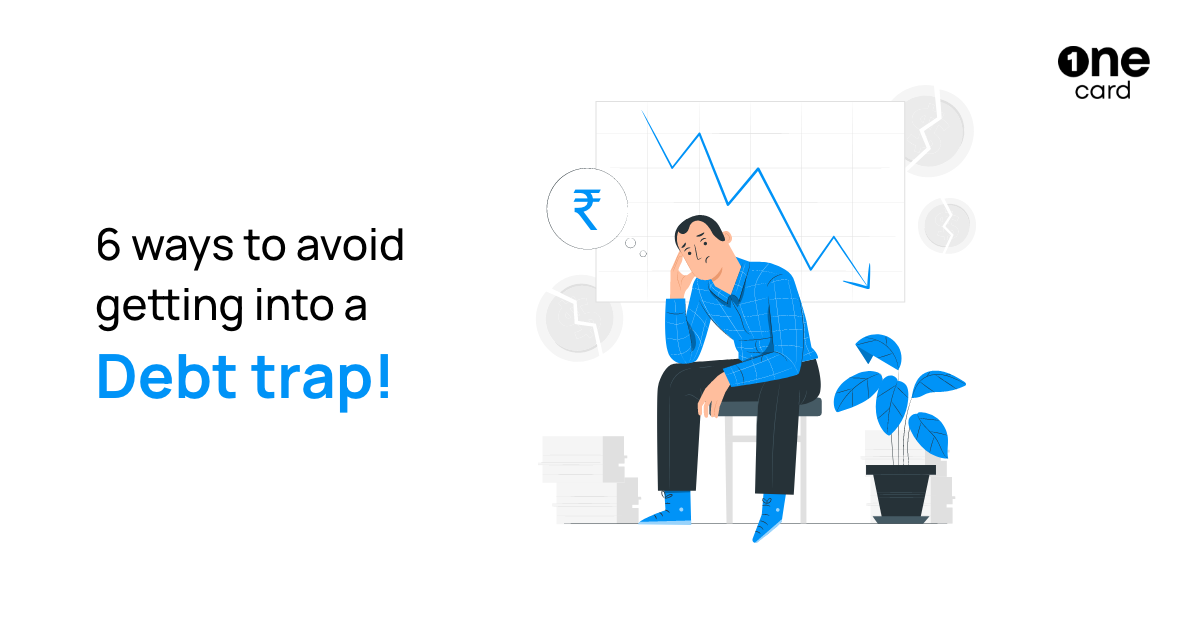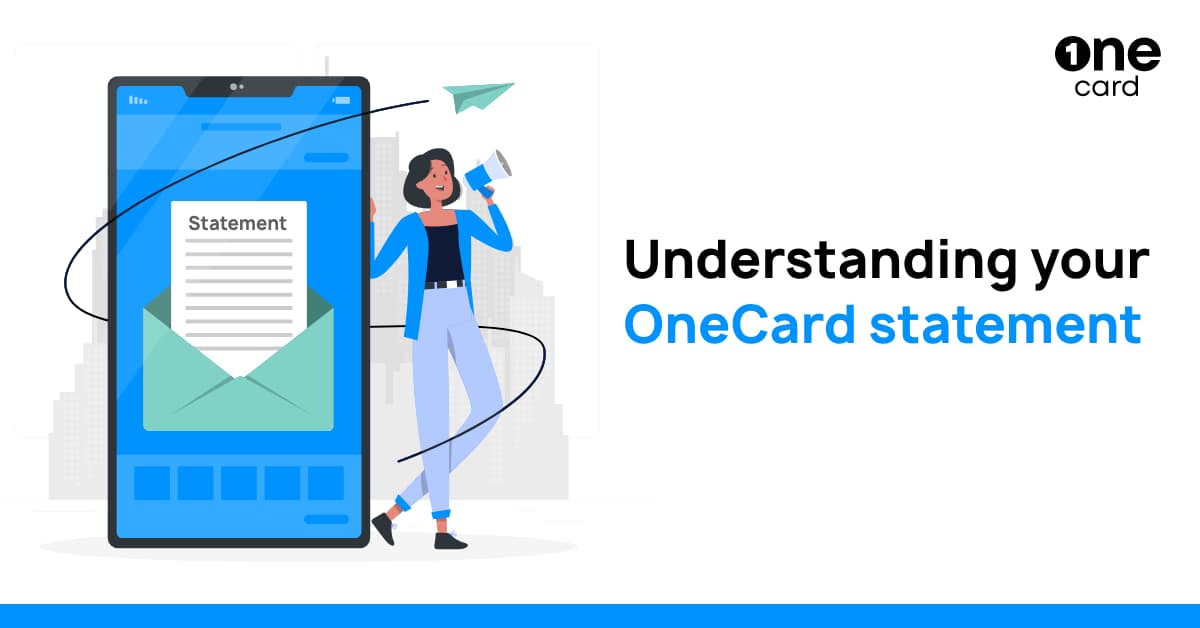Debt Trap - What Is It and How to Avoid It?
By OneCard | December 29, 2021

Table of contents:
We all should master the skill of using a credit card smartly.
One needs to find the right balance between swiping the credit card when we want to and yet not over utilise our credit limit. More importantly one should take multiple lines of credit like loans, credit cards, etc., only if he/she has the capacity to repay all on time. If the borrowed money is not managed in the right manner, the chances of falling into a ‘debt trap’ increases.
What is debt trap
A debt trap is a situation where a person is unable to pay back the money borrowed for a prolonged time leading to an increase in the dues due to interest charged, late payment fee, etc.; eventually leading to the vicious cycle of a debt trap.
Crawling into a debt trap can become very overwhelming, strenuous and stressful. And while there are ways to come out of a debt trap, it’s best to avoid falling in it.
Here are 6 ways to avoid falling into a debt trap:
1. Always clear your dues on time
The first step to avoid a debt trap is by clearing your credit card bills and loan EMIs on time and in full. Paying just the partial amount or the minimum amount due in case of your credit cards can seem tempting at the time; but carry the same behaviour for very long and you may find yourself in a debt trap.
ALSO READ: Tips to Avoid Credit Card Late Payment Charges?
2. Understanding your debt
One of the most important things is to analyse the types of debts you have. The details of your debt holds the key to how you can manage it properly. The types of debts you owe, the tenure of your debt, the interest rates associated with each debt, total outstanding amount, among others need your attention.
Understanding your debt can help you prioritize them on the basis of which debt needs to be paid off first, which will bear more interest if you delay in making your payments, etc. Hence, analysing your debts and understanding them is a crucial step of avoiding a debt trap.
3. Alter your lifestyle
More than often, our lifestyle plays an important role in determining and managing our debts. Making changes to your habits, curbing and eliminating unnecessary expenses is a start to better debt management. Make a monthly budget and manage your income in a manner where you are able to plan out your expenditure and save some extra cash every month in an efficient manner.
4. Rethink your priorities
Once you have understood your debt, you need to prioritise expenses on a day to day basis. It’s important to take some time and ask yourself whether something is important for you and how high it is on your priority list. If an item that is not needed by you is high on your priority list, maybe it’s time to rethink your priorities.
Moreover, spending on luxury items instead of economical alternatives can lead you into a debt trap. Budgeting and setting your priorities right can help you go a long way in managing your debt and finances.
5. Consider Debt Consolidation
Debt consolidation basically means clearing all your debts by taking one debt. While this may seem off, the truth is remembering multiple payment dates and interest charges can get overwhelming. Also, setting one single payment date towards the beginning of the month will ensure you are able to pay your dues around the same time you get your salary. Once you pay the debt for the month from your monthly income, you have a much clearer picture of how to manage the month with the remaining amount.
6. Build an Emergency Fund
Last but one of the most important points is having an emergency fund. Think of it in this manner, if you have an emergency fund at the right time, you might not fall into a debt trap. A debt trap typically starts, where you keep borrowing to pay one amount after the other. Also, people usually borrow when they are in sudden need of a substantial amount due to any reason like a medical emergency, capital for business, etc,. If this cycle is broken in the initial stages itself, you can avoid a debt trap.
Keep an eye for some signs on your financial constraints to avoid falling into a debt trap. Catching hold of these signs like unable to pay your bills, living on the edge, no saving, etc. at an early stage can help you plan your finances better and help you lead a healthy financial life.

**Disclaimer: The information provided in this webpage does not, and is not intended to, constitute any kind of advice; instead, all the information available here is for general informational purposes only. FPL Technologies Private Limited and the author shall not be responsible for any direct/indirect/damages/loss incurred by the reader for making any decision based on the contents and information. Please consult your advisor before making any decision.



Sharing is caring 😉